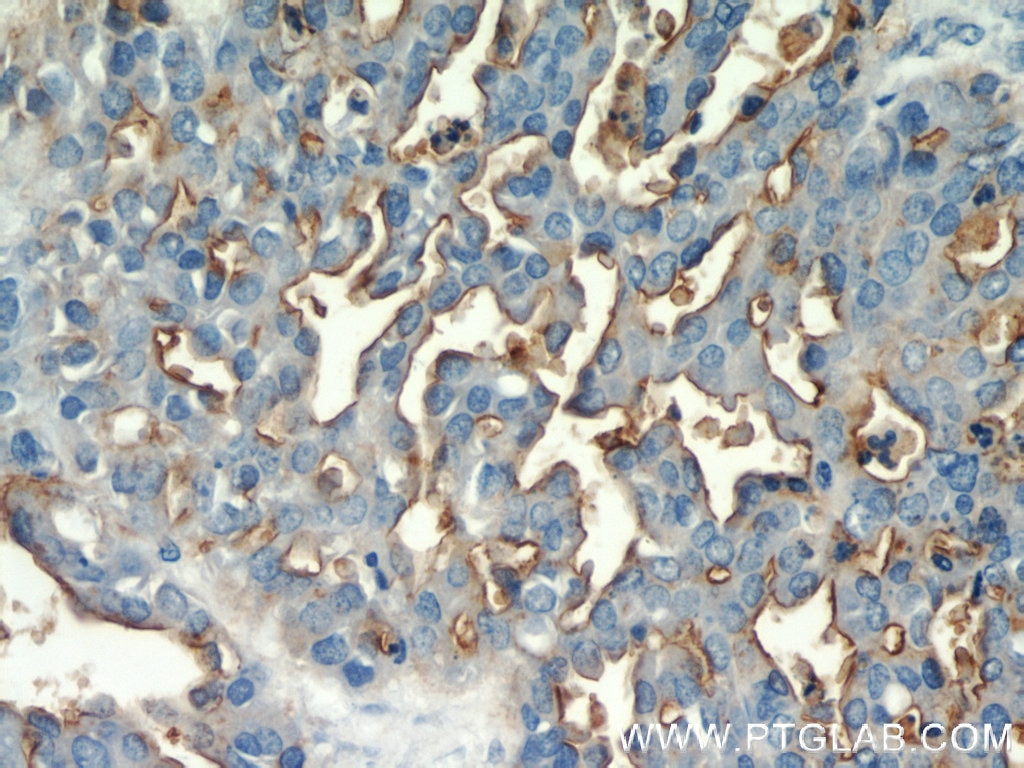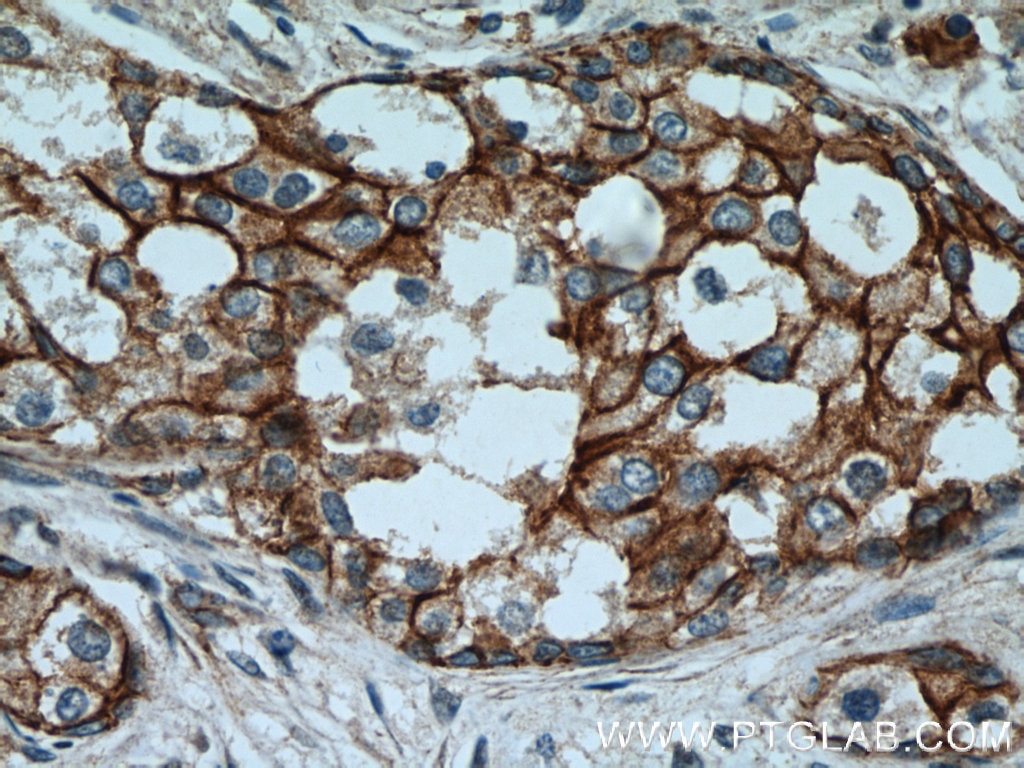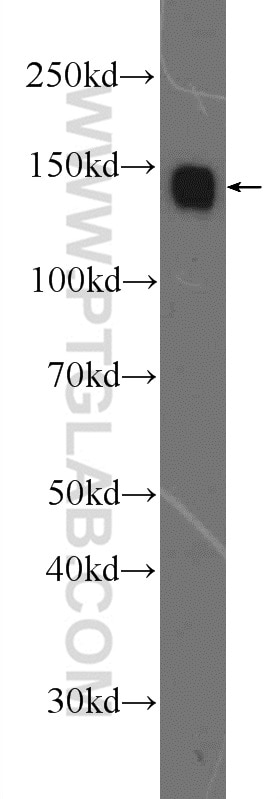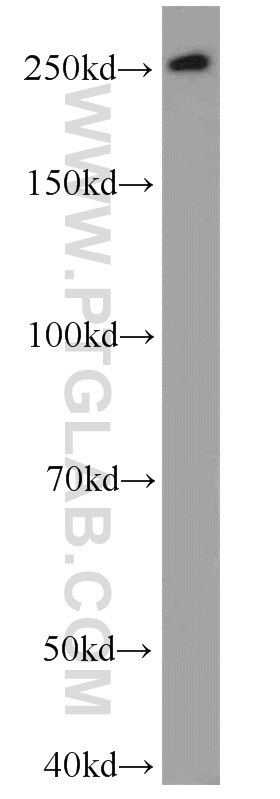- Featured Product
- KD/KO Validated
MUC1/CA15-3 N-terminal Polyklonaler Antikörper
MUC1/CA15-3 N-terminal Polyklonal Antikörper für ELISA
Wirt / Isotyp
Kaninchen / IgG
Getestete Reaktivität
human und mehr (2)
Anwendung
WB, IHC, IF, CoIP, ELISA
Konjugation
Unkonjugiert
Kat-Nr. : 19976-1-AP
Synonyme
Galerie der Validierungsdaten
Geprüfte Anwendungen
Empfohlene Verdünnung
| Anwendung | Verdünnung |
|---|---|
| It is recommended that this reagent should be titrated in each testing system to obtain optimal results. | |
| Sample-dependent, check data in validation data gallery | |
Veröffentlichte Anwendungen
| KD/KO | See 1 publications below |
| WB | See 12 publications below |
| IHC | See 4 publications below |
| IF | See 1 publications below |
| CoIP | See 1 publications below |
Produktinformation
19976-1-AP bindet in WB, IHC, IF, CoIP, ELISA MUC1/CA15-3 N-terminal und zeigt Reaktivität mit human
| Getestete Reaktivität | human |
| In Publikationen genannte Reaktivität | human, Hund, Maus |
| Wirt / Isotyp | Kaninchen / IgG |
| Klonalität | Polyklonal |
| Typ | Antikörper |
| Immunogen | Peptid |
| Vollständiger Name | mucin 1, cell surface associated |
| Berechnetes Molekulargewicht | 122 kDa |
| Beobachtetes Molekulargewicht | 122 kDa |
| GenBank-Zugangsnummer | J05582 |
| Gene symbol | MUC1 |
| Gene ID (NCBI) | 4582 |
| Konjugation | Unkonjugiert |
| Form | Liquid |
| Reinigungsmethode | Antigen-Affinitätsreinigung |
| Lagerungspuffer | PBS mit 0.02% Natriumazid und 50% Glycerin pH 7.3. |
| Lagerungsbedingungen | Bei -20°C lagern. Nach dem Versand ein Jahr lang stabil Aliquotieren ist bei -20oC Lagerung nicht notwendig. 20ul Größen enthalten 0,1% BSA. |
Hintergrundinformationen
MUC1 is a type I transmembrane glycoprotein expressed by various epithelial cells of female reproductive tract, lung, breast, kidney, stomach, and pancreas. MUC1 is transcribed as a large precursor gene product, and upon translation, is cleaved in the endoplasmic reticulum, yielding two subunits: the large extracellular N-terminal subunit (MUC1-N, about 120-200 kDa) and the small cytoplasmic C-terminal subunit (MUC1-C, about 23-30 kDa). Among the known mucins, MUC1 is best studied and plays crucial roles in regulating many cellular properties, including cell proliferation, apoptosis, adhesion, and invasion. MUC1 is overexpressed in a wide range of human epithelial malignancies. This antibody was raised against the N-terminal region of human MUC1, thus it recognizes the 120 kDa extracellular MUC1.
Publikationen
| Species | Application | Title |
|---|---|---|
ACS Appl Mater Interfaces Aptamer-Peptide Conjugates as Targeted Chemosensitizers for Breast Cancer Treatment. | ||
Clin Cancer Res Integrative Genomic Analysis of Gemcitabine Resistance in Pancreatic Cancer by Patient-derived Xenograft Models. | ||
Oncogene Core 3 mucin-type O-glycan restoration in colorectal cancer cells promotes MUC1/p53/miR-200c-dependent epithelial identity.
| ||
Int J Nanomedicine Integration of Dual Targeting and Dual Therapeutic Modules Endows Self-Assembled Nanoparticles with Anti-Tumor Growth and Metastasis Functions. | ||
Cell Cycle LINC02535/miR-30a-5p/GALNT3 axis contributes to lung adenocarcinoma progression via the NF- κ B signaling pathway. | ||
Front Oncol YBX1 Enhances Metastasis and Stemness by Transcriptionally Regulating MUC1 in Lung Adenocarcinoma. |






